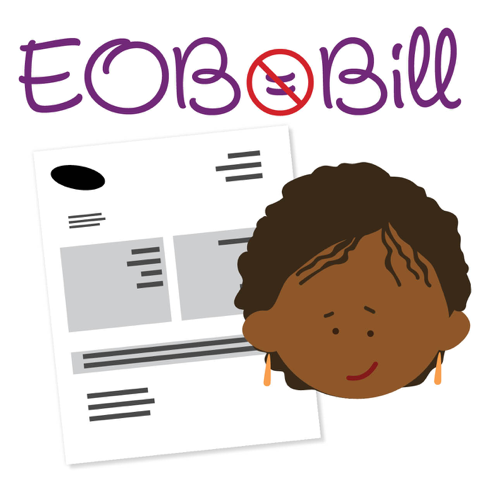How to Read Your Explanation of Benefits

When you receive an Explanation of Benefits (EOB) from your health insurance company, what do you do with it? Does it fill you with a sense of panic because you think it’s a bill? Or do you set it aside with your junk mail, never getting around to it? We hope the answer to both of those questions is no. The EOB you get from CDPHP – or any health plan – is not a bill, but serves to keep you informed of how your care is being covered. It will show how much your insurance company has paid, how much you have paid, and any outstanding amount you may still owe your provider.
Why Should I Care What the EOB Says?
There are several important reasons to check your EOB each time you receive one. Here are just a few:
- Comparing the “Amount billed,” the “Amount allowed,” and “Amount you may owe,” will give you a clear idea of the value of your benefits.
- If you do still owe your provider something for the visit, this will be reflected on your EOB. Knowing about it in advance can help you plan and budget. When you get a bill from the provider, compare it with your EOB. They should match in terms of your payment responsibility.
- If you get an EOB for a service you don’t recall receiving, call a member services representative at the number on your ID card for help researching the claim.
Health Care and Health Insurance Terms We Use
While every health plan’s EOB differs in layout, the general purpose of the document is the same, so there is some commonly used EOB terminology that it’s helpful to know:
- Provider name: The name of the person or location that provided the service.
- Date(s) of service(s): This is the date you received the treatment in question.
- Amount allowed: A discounted amount, negotiated by your health insurer, that their network providers have agreed to accept for the service in question.
- Provider withhold: Providers treating members in certain plan types agree to delay receiving a portion of their reimbursement. They receive the money the following year once it has been determined that the network fulfilled standards for member satisfaction, cost-effectiveness, and quality of care. (Withhold amounts are included in the “Amount Paid by the Plan.”)
- Amount paid by the plan: Amount your health plan has paid the provider (if any).
- Amount you may owe the provider: This refers to the difference between the allowed amount and the amount paid by the plan.
- Benefit status information (may be called an overview or summary): Look here for an overview of your progress toward meeting your deductible and out-of-pocket maximum (if applicable). The information shown here will correlate to the most recent benefit period reflected on the EOB.
- HRA status information: A health reimbursement arrangement (HRA) is an account set up by your employer that you can use to pay for certain health-related items and services. If you have an HRA through your health plan, your EOB will also provide an overview of this account: how much has been used for the benefit period, how much was used as a result of the EOB you received, and how much is remaining.
- Copay, deductible, and coinsurance: This is a summary of what you will owe (if you have not already paid it).
- Appeals information: You have the right to appeal benefit decisions made by your health insurance company. Your EOB will outline how to get information about the process.
- Surprise bill information: You may also see language on your EOB informing you that the claim(s) listed could be a surprise bill. This is part of the Out-of-Network (OON) mandate, designed to protect you from receiving so-called “surprise bills” from out-of-network doctors or facilities. Get more information on surprise bills, what they are, and what to do with them.
Understanding your EOB and its terminology is an important step in becoming a responsible health care consumer. Have an EOB with a term we haven’t covered? Get more help understanding health insurance terms. Or visit our health coverage and medical terms page, committed to giving you the tools you need to make the most of your health insurance – complete with blog posts, Q&A, a quiz, and even podcasts.
 The Daily Dose
The Daily Dose
Ted Lackner
If your EOBs remain as unintelligible as they were when CDPHP was routinely denying payment for services it had pre approved, this mailing is farcical. Explanations that reps in the call center couldn’t understand or explain. Dozens of denials that were reversed when grieved, but never explained in English…just meaningless CDPHP jargon. Adding to the stress of my wife’s terminal illness. And I have a high level of tolerance for unintelligible language, acquired during 36 years working with tax law.
Jennifer Brett-Hargis
I apologize for your frustration, and understand that these documents can be confusing. Our team works hard to provide members with the information they need, and we appreciate your feedback. If you have any additional questions or concerns, please don’t hesitate to contact a member of our service department at 518-641-3700 or 1-800-777-2273.